
Nine of us struggled through the terrible Bristol traffic and the narrow lanes of Banwell to get to the site of the caves – and were we glad we had done so. The Banwell Caves team of Yvonne Sargent, John Haynes and John Chapman made us so warmly welcome in the still, sunny weather that immediately we were mollified and up for anything.
The cave system was broken into by miners in 1757 and then lost again until folk memory prompted the vicar of Banwell in 1824, in search of new sources of income for the village, to pay two miners the princely sum of £1 (between them) to dig again. George Henry Law, the new Bishop of Bath and Wells, who owned the land was delighted at what was found and especially the bones – clear evidence of the biblical flood – which he could exploit as evidence of the need for vigilance in a wicked world. He erected a druid temple nearby (don’t ask), built a cottage above, which later expanded into the current house, planted a wood, placed summer houses and seats, and on the apex of the hill he built a tower.
His most important buildings have been lovingly restored and we had them all beautifully explained in the course of a gentle walk. We were prepared by a helpful film shown in the ‘cottage’ part of the house, then began with the Bone Cave. Down very steep steps and atmospherically lighted by candles, it has the thousands of bones all neatly gathered in picturesque stacks against the walls, the work of William Beard the first curator – who guided his last tour in 1865 at the age of 93. The Natural History Museum have identified 10 species: bison (the most), otter, wolf, wolverine, arctic hare, reindeer, northern vole, red fox, arctic fox and a brown bear – extra large. They are all Cold (Tundra) Fauna and date from the beginning of the last Ice Age, 50 to 80,000 years ago. It is assumed that they died in the open and their bones, preserved by the cold, were washed into the caves over a long period of time. What remains of the collection, now known as the Banwell Type Fauna and listed as a Site of Special Scientific Interest, is extraordinary and the display is a historical wonder.
The cave system is extensive and has many natural cave features including stalactites and a lake. It was explored more thoroughly in the 1970s including by our guide John Chapman and also Chris Richards, recently retired, who features in the film. But rock falls and narrow access penetrable only by the most intrepid of pot-holers mean that only the bone cave is open to visitors.
Above ground we explored the Bishop’s other nooks and crannies, complete with his written exhortations. As well as the Druids’ Temple there was the Osteoicon, built to display some of the bones and now restored into the beginnings of a small museum, and the Pebble Summer House with every pebble lovingly collected and placed into the original design. Then the Tower reached through the sun-dappled woods. Up the turret stairs to the top and the incredible view over Weston, Clevedon, and as far as the Brecon Beacons on an exceptionally clear day. This was the first of the Bishop’s follies to be restored and one can see why.
Back to the house for tea and strawberry cake and to buy a souvenir guidebook. And to ask for more stories – the history of the caves and the area and Mendip mining (lead, calamine, ochre and barites) will never fail to interest. And most intriguingly another set of caves is now known from nearby which appears to contain the remains of a Tropical Fauna……….
We had the most exciting time (and a much easier journey home).
(Text and photos from Gundula Dorey)
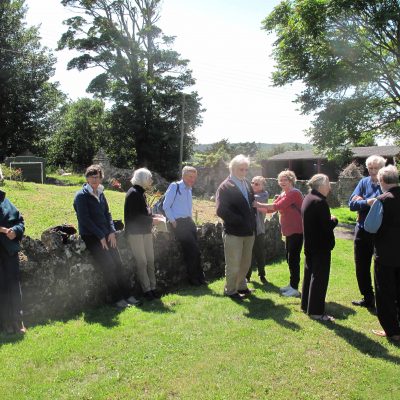
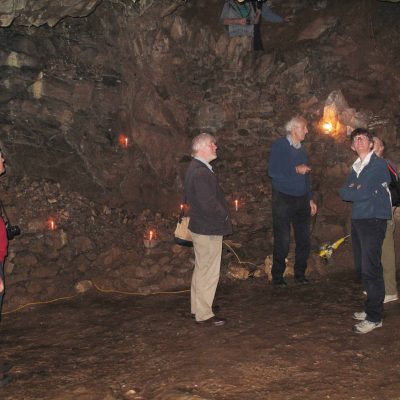
BAAS members at the Bone Cave Inside the Bone Cave
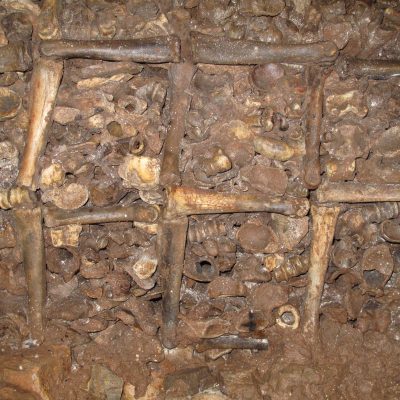
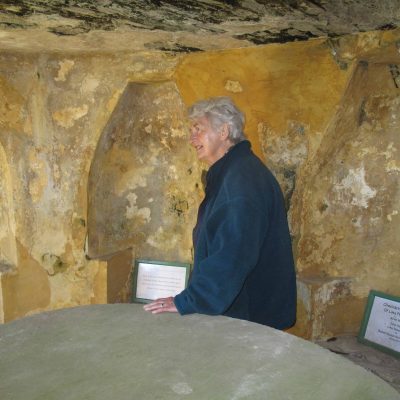
Bones piled up in the cave The Druid Temple
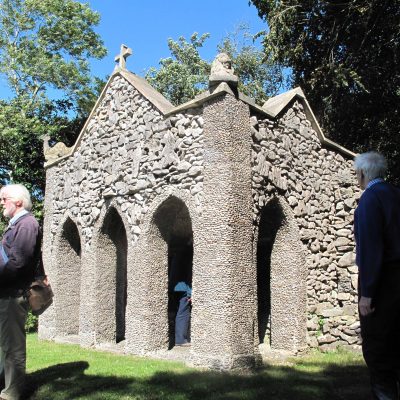
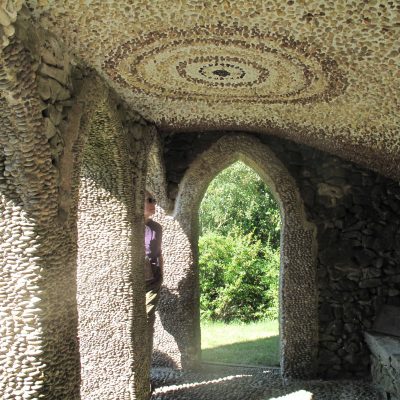
Pebble Summer House Inside the Pebble Summer House
![]()
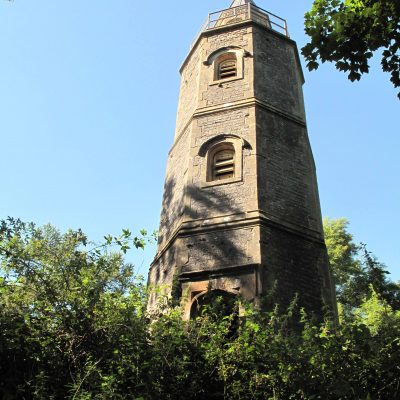
The Osteoicon The Tower
